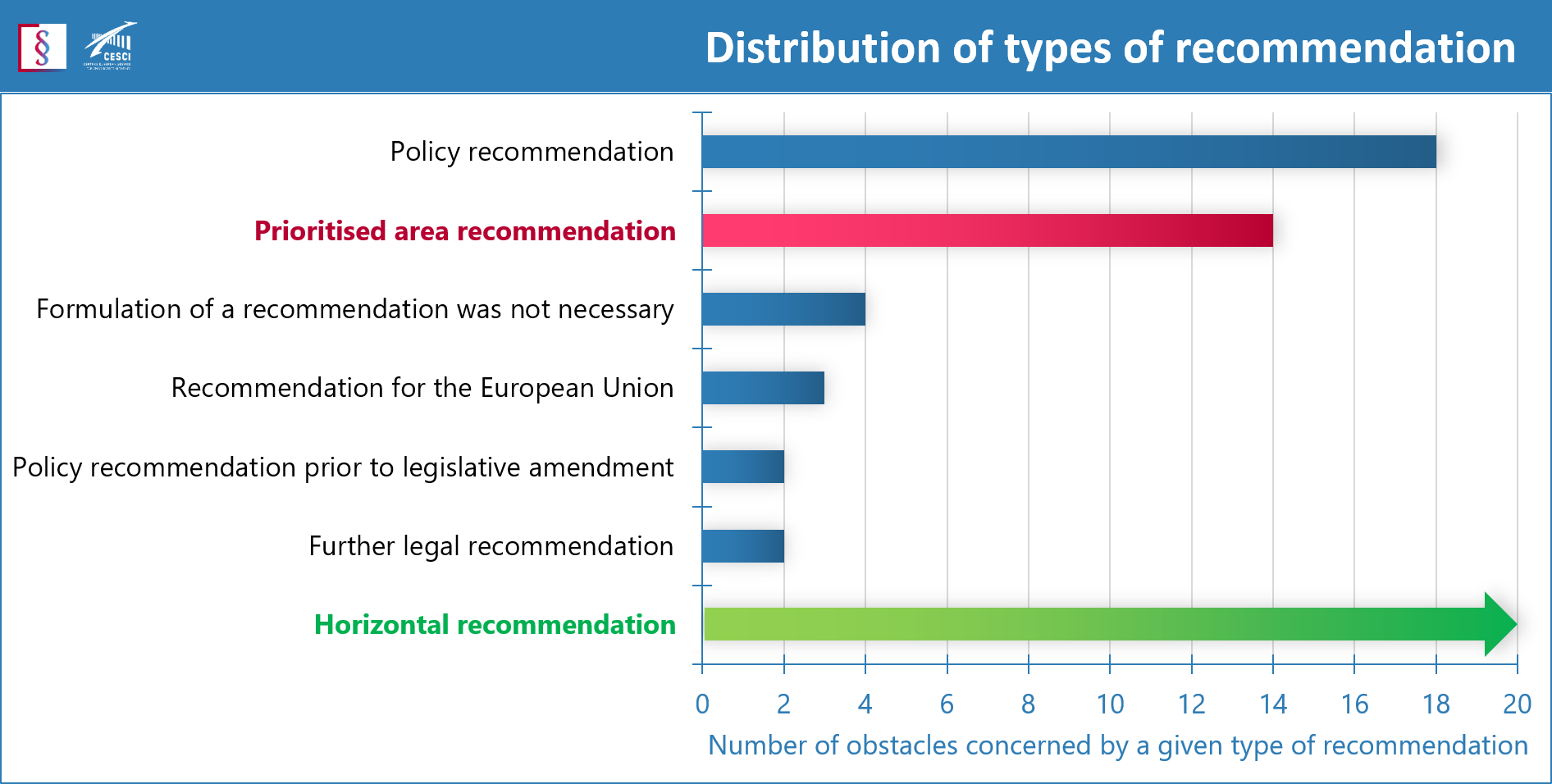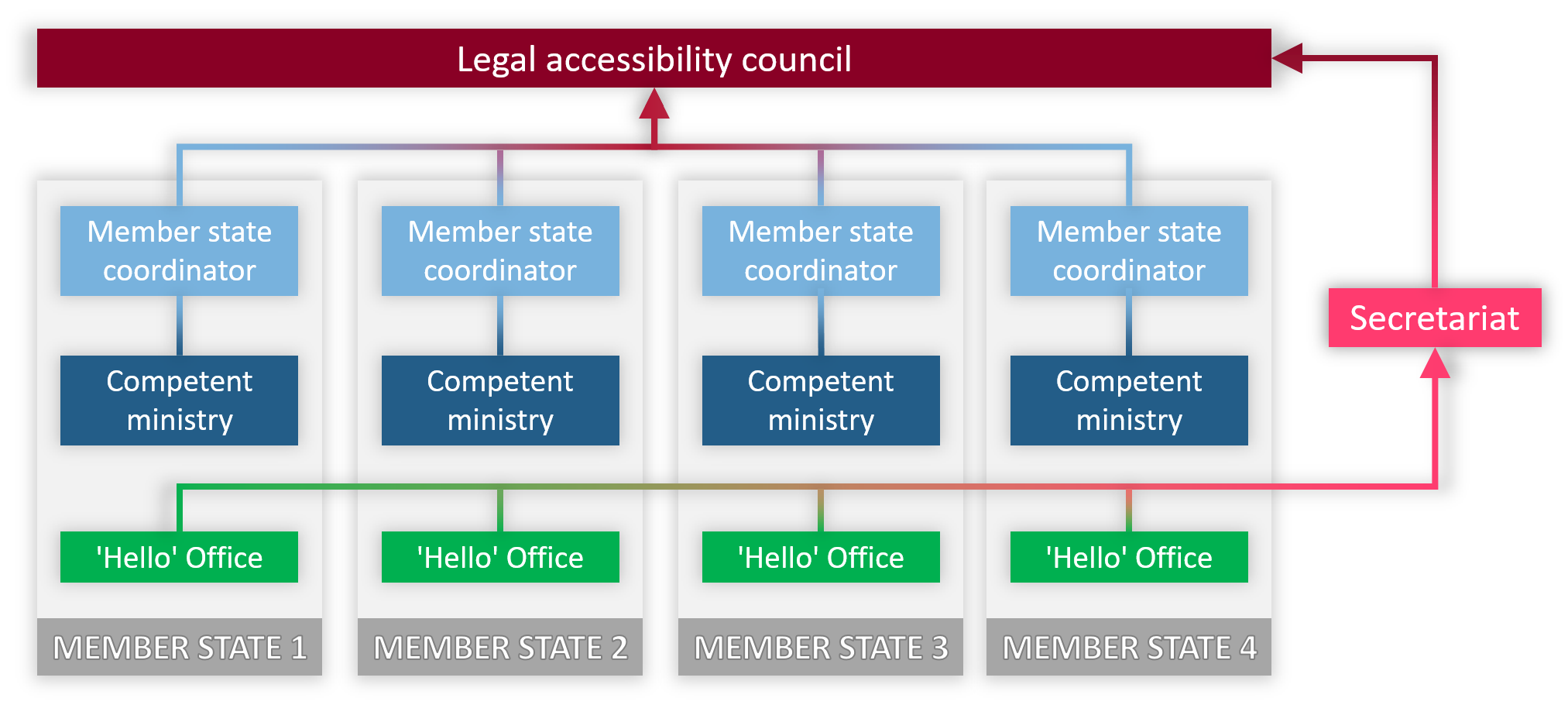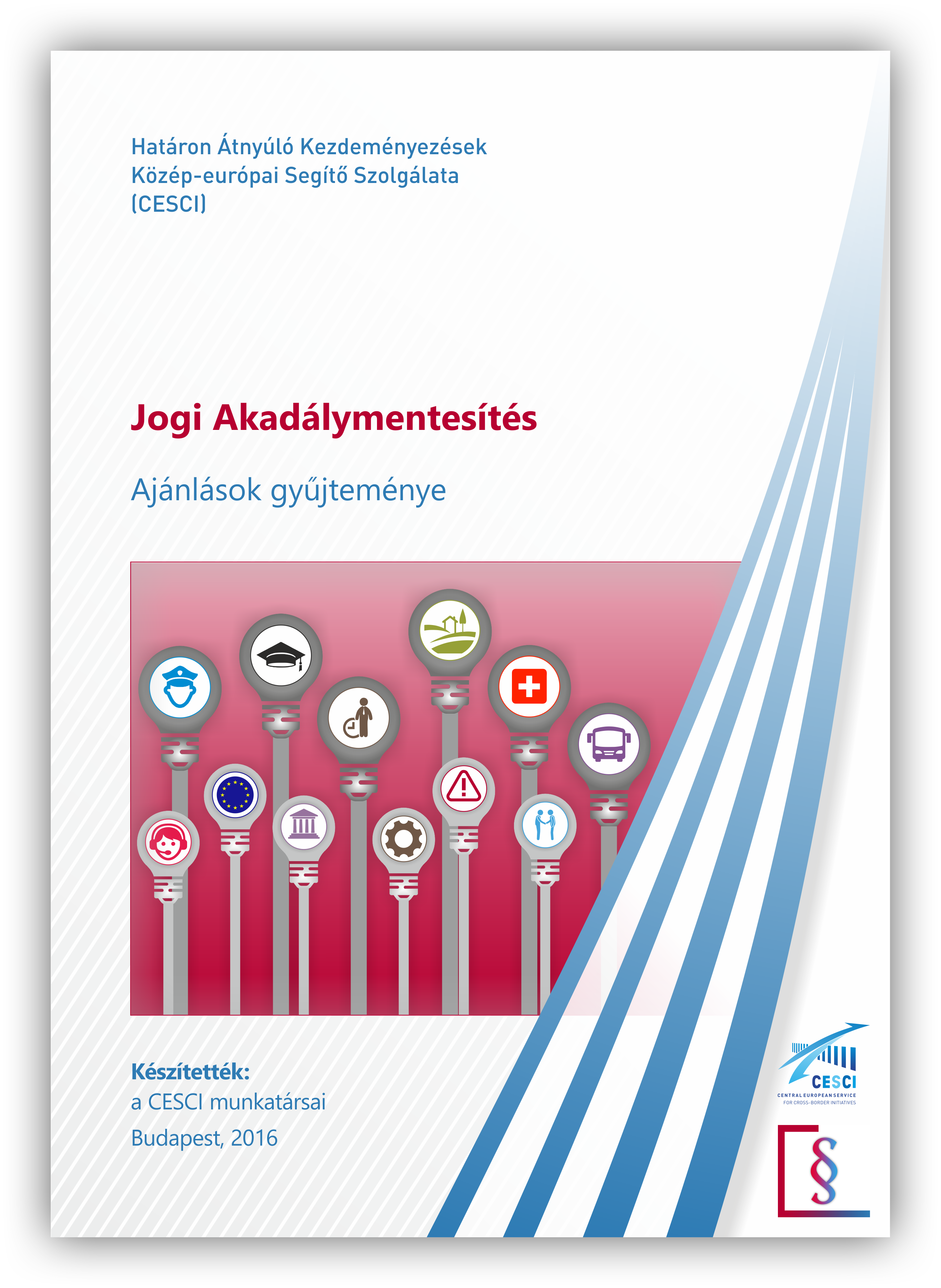You can download the Set of recommendations prepared in the framework of the project by clicking on the following picture:
Based on the research activities carried out during the previous phases of the Legal accessibility project, in the subsequent stage we drafted recommendations regarding the obstacles identified at the stakeholder workshops. While doing so, we made a priority for four sectors: cross-border mobility and public transport, cross-border labour market cooperation, health care services and local products. These topics were treated in a comprehensive and integrated way (i.e. several obstacles have been merged into one larger subject) and this way we formulated concrete policy and legal recommendations.
The figure below demonstrates the share of types of recommendations in a comprehensive way. The four prioritised areas concern altogether 14 previously identified obstacles and for each of them we drafted, applying the method mentioned before, complex recommendations including both legal and policy recommendations and proposals addressed to the European Union. As it is indicated on the figure, the horizontal recommendations formulated based on the experience of the research conducted after the identification of the barriers are relevant in relation to the resolution of all obstacles affecting border areas.

We made three types of recommendations for the removal of the barriers: if it was possible, we drafted a legal text proposal; in other cases, we made a proposal to policy interventions; and if we considered the room for manoeuvring too narrow for national level interventions, we initiated an EU level solution.
The legal recommendations can be classified again into three groups:
- proposals of bilateral agreements, the wording of the agreement included;
- proposals for modification of particular legal text;
- guidelines for the necessary modification of the legal environment.
The study also contains a horizontal or, in other words, a „meta-level” chapter which, reaching beyond the sectoral based approach makes proposals on the one hand to apply EU and national level solutions for the information of the citizens; and, on the other hand, based on the example of the Nordic Council, to launch institutionalised mechanisms, by also involving neighbouring countries, which, make the problems caused by the borders erected by the nation states manageable.

